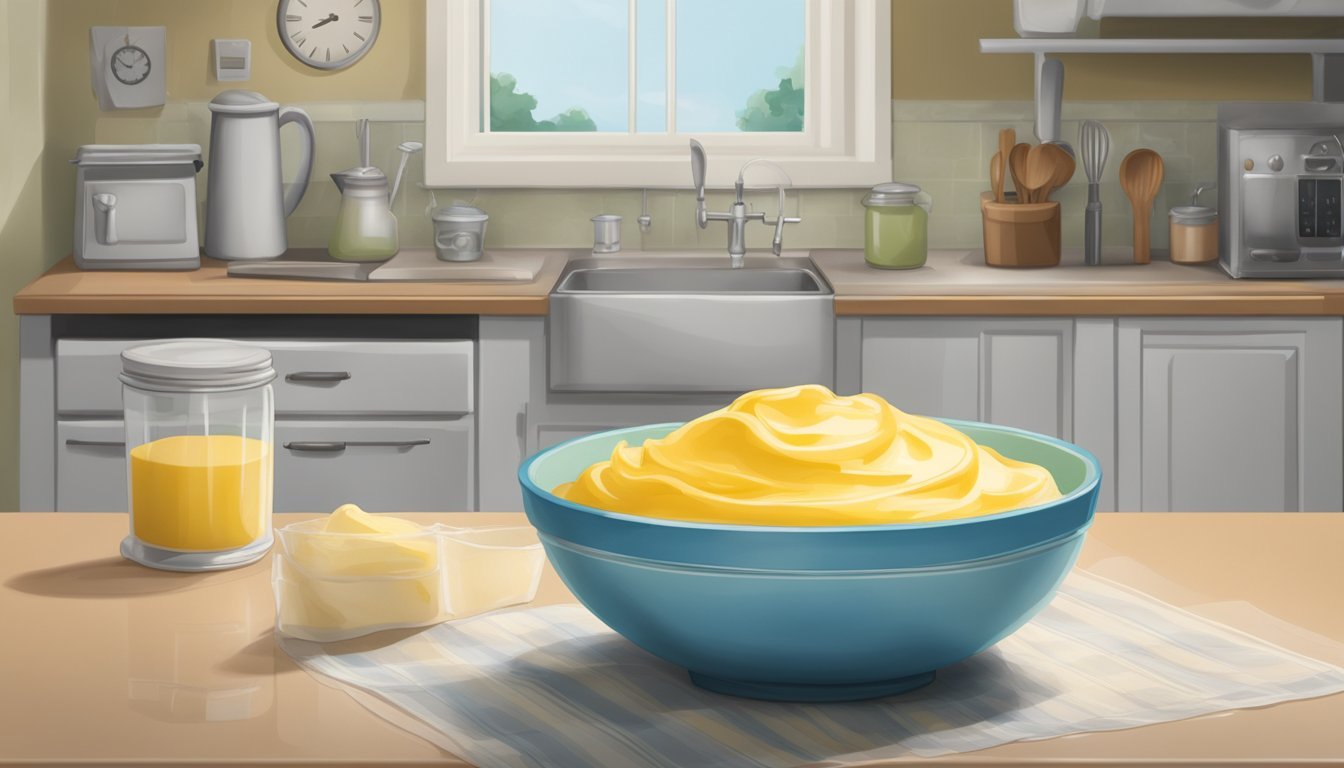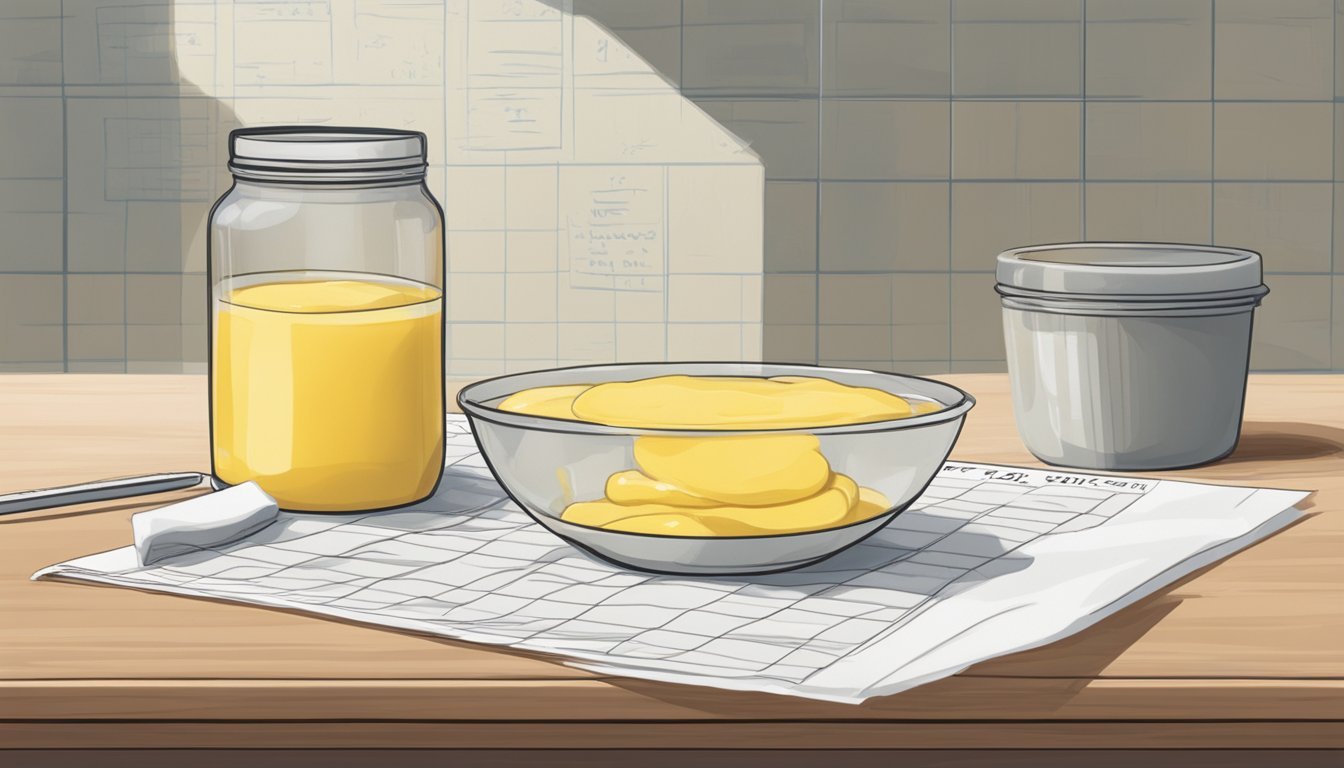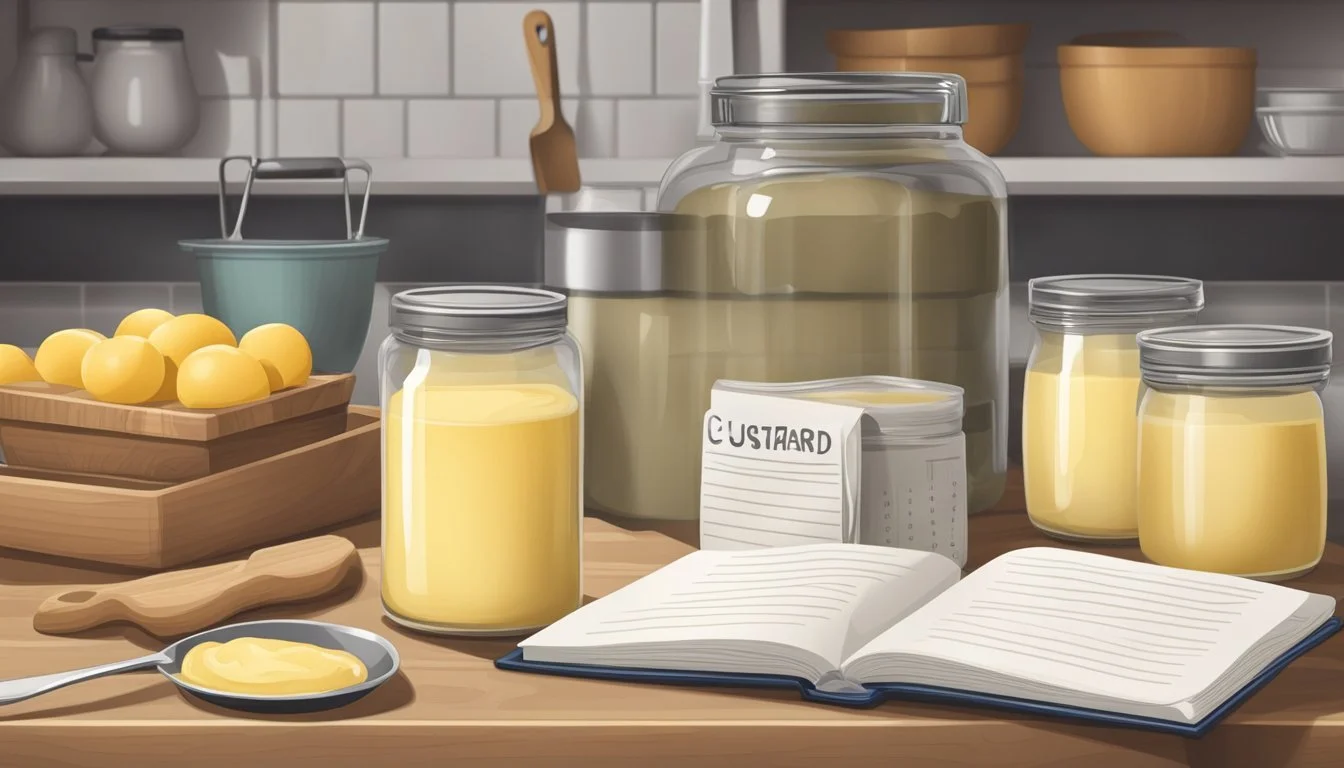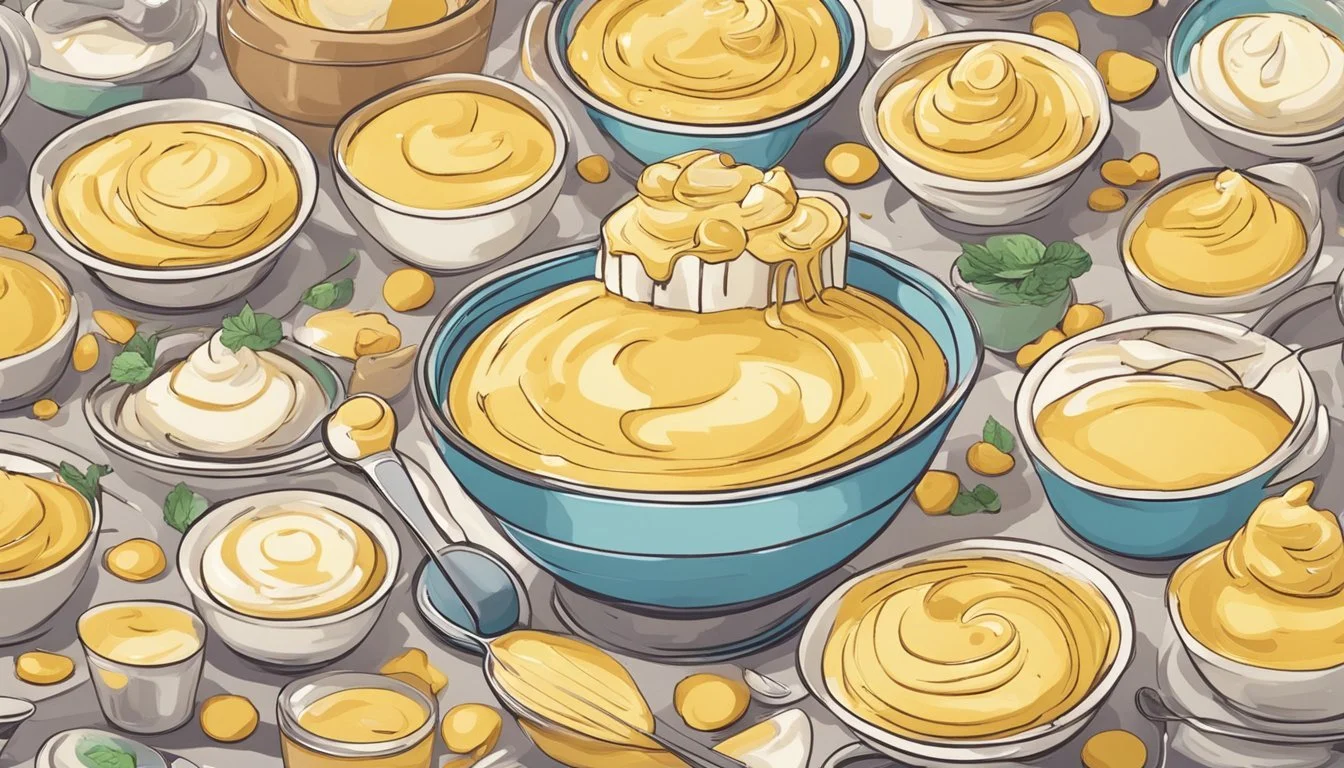How Long Do Freshly Prepared Custards Last?
Shelf Life and Storage Tips
Custard, a classic dessert base, enjoys widespread appeal for its creamy texture and versatility. Freshly prepared custard varies in longevity depending on storage conditions, ingredients, and whether it has been cooked. In optimal circumstances, such as when promptly refrigerated, cooked custard can last between 3 to 4 days. A cardinal rule for custard storage is to keep it in an airtight container, which helps to prevent contamination and preserve freshness.
The conditions under which custard is cooled and subsequently stored are critical to extending its shelf life while maintaining quality. Cooling it swiftly and refrigerating it at temperatures below 41°F (5°C) is advisable. Care must be taken to note any signs of spoilage, like a sour smell or an off taste, at which point the custard should be discarded. While freezing custard is an option for longer preservation, it can affect its smooth texture, making it imperative to consume it shortly after thawing for the best experience.
Understanding Custard Basics
Custard, a creamy and sweet dessert, is a fundamental component of numerous dishes. This section delves into the essentials of custard, discussing its components, variations, and preparation methods that characterize this popular dessert.
Components of Custard
Custard primarily comprises milk or cream, egg yolks, and sugar. The egg yolks provide a rich protein base that helps thicken the custard, while the milk or cream contributes to its creamy texture. Vanilla extract or other flavorings can be added to enhance its taste.
Types of Custard
There are various types of custard, each with a distinctive preparation and serving style. One can categorize custard into baked custard, like crème brûlée, stovetop custard, which includes pastry cream, and frozen custard, a denser version of ice cream.
Custard's Texture and Flavor Profile
A successfully prepared custard typically has a smooth and creamy texture. Its flavor is predominantly sweet with a delicate balance of vanilla or other added flavors. Overheating can lead to curdling, thus ruining the smooth consistency by causing the milk proteins and egg proteins to separate.
How to Make Custard at Home
Homemade custard involves gently heating the mixture of milk or cream, egg yolks, and sugar until it thickens. Ensuring an even temperature and constant stirring is crucial in preventing the mixture from curdling.
The Chemistry of Custard
The thickening of custard is a result of the coagulation of egg proteins, which occurs as the heat is gently applied. The precise temperature control ensures that the proteins mesh in a way that thickens the mixture without creating lumps.
Fresh Custard Preservation
Freshly prepared custard's shelf life heavily depends on proper storage techniques. This section will guide you through the best practices for storing, freezing, and understanding the optimal conditions for extending the freshness of custard.
Storing Fresh Custard
For immediate storage, freshly made custard should be cooled rapidly to limit bacterial growth. Follow these steps:
Transfer the custard to a shallow container to allow for faster cooling.
Cover the surface with plastic wrap to prevent a skin from forming and to avoid absorption of other food odors.
Refrigerate promptly; custard must be stored in the refrigerator below 41°F (5°C).
Note: Storing leftover custard in an airtight container is key to maintaining its texture and freshness.
Freezing and Thawing Custard
Custard can be frozen for longer storage, with a few caveats:
Wrap the container in heavy-duty aluminum foil or place it in a heavy freezer bag to prevent freezer burn.
When ready to use, thaw the frozen custard in the refrigerator.
Caution: Expect a change in texture after freezing, as it can become slightly grainy. Stir well after thawing to improve consistency.
Optimal Conditions for Custard Shelf Life
To maximize the shelf life of custard:
Keep it refrigerated constantly at a temperature below 41°F (5°C).
Fresh custard, if refrigerated properly and kept in an airtight container, typically lasts for about 3-4 days.
Always check for signs of spoilage like sour smell or an off taste before consumption and discard if any are present.
Remember: The expiration date on any added ingredients can affect the overall shelf life of the custard.
Extending Custard's Shelf Life
To maintain the quality and safety of custard, certain storage practices must be rigorously followed. This section addresses specific steps to prevent early spoilage, keeping custard fresh for an extended period, and the comparison between refrigeration and freezing methods of preservation.
Preventing Early Spoilage
Freshly prepared custard is highly perishable, largely due to its dairy content and the presence of eggs. To prevent early spoilage, it is crucial to cool the custard rapidly after preparation. Rapid cooling restricts the growth of bacteria, which thrive at warmer temperatures. A shallow container should be used to facilitate quicker cooling, and placing the container in an ice bath can accelerate the process. Furthermore, adding an ingredient like cornstarch can serve as a stabilizer, which can help in retaining the custard's texture and impeding bacterial growth.
Tips for Keeping Custard Fresh Longer
To extend the shelf life of custard:
Store in Airtight Containers: Once cooled, transferring custard to an airtight container is essential to minimize exposure to air, which can introduce bacteria and odors.
Keep It Refrigerated: The ideal storage temperature for custard is below 41°F (5°C). Consistently cold temperatures inhibit bacterial growth and help preserve the custard's flavor and texture.
Refrigeration vs. Freezing
While refrigeration is effective for short-term storage of custard, freezing can prolong its lifespan. However, freezing may alter the texture of custard due to the formation of ice crystals. When choosing to freeze custard:
Thaw in Refrigerator: To maintain safety, custard should be thawed in the refrigerator and consumed within three to four days.
Avoid Repeated Freeze-Thaw Cycles: This can significantly degrade the custard's quality. Therefore, it's recommended to freeze in portion-sized amounts that can be thawed and consumed without the need for refreezing.
By adhering to these practices, custard can be kept fresh for the maximum time frame, ensuring that safety and taste are preserved until the expiration date.
Serving and Using Leftover Custard
When it comes to leftover homemade custard, one can both preserve its silky texture and infuse it into a variety of desserts. Here's how to ensure that not a spoonful goes to waste and maintain optimal flavor when reheating.
Creative Uses for Leftover Custard
Leftover custard can be a versatile ingredient in the kitchen. It's perfect for enriching the flavor of desserts or creating entirely new treats. Here are some inventive ways to utilize leftover custard:
Custard Ice Cream: Transform custard into a creamy, homemade ice cream. Combine the custard with an equal part of heavy cream, and churn it using an ice cream maker.
Custard Cream for Pies and Tarts: Unused custard makes an excellent filling for pies and tarts, adding a velvety layer of flavor.
Trifles: Layer your leftover custard in a trifle, alternating with sponge cake, fruit, and a drizzle of chocolate sauce for a delightful dessert.
Reheating Custard Without Curdling
The key to reheating custard without it curdling is gentle heat. To safely reheat custard:
Use a double boiler or place a heatproof bowl over a saucepan with simmering water.
Constantly stir the custard to ensure even heating.
Keep the heat low and steady, and remove the custard from the heat once it's warm to prevent overheating.
Mixing Custard into Other Desserts
Custard can enrich the flavor of various other desserts. To incorporate it:
Custard Cream Puffs: Fold the custard into whipped cream for a light and airy custard cream perfect for filling cream puffs or éclairs.
Sauces: Thinned out with a bit of milk or cream, custard can be made into a rich sauce ideal for drizzling over cakes or fresh fruit.
Flavored Custards: Add chocolate, vanilla, or pureed fruits to the custard for a flavored twist and use it as a dip, spread, or filling.
By merging custard with other components in a dessert, one can achieve textural complexity and interesting flavor profiles—turning what could have been discarded into culinary delights.
Safety and Enjoyment of Custard
Freshly prepared custards offer a delightful balance of sweetness and creaminess, making them a popular dessert choice. However, for optimal enjoyment and safety, one should pay close attention to storage practices and flavor pairings.
Detecting Signs of Spoilage
For the safety of consumers, recognizing when custard has spoiled is crucial. Signs of spoilage include:
Smell: A sour or unpleasant odor is a clear indication that custard is no longer safe to consume.
Texture: Custard should be smooth and creamy. If it appears lumpy or watery, it may signify bacterial growth.
Taste: If there is any hint of sourness or an off-flavor, the custard should be discarded.
Custards typically have an expiration date of 3-4 days when stored in the fridge, as bacteria can proliferate after this period, leading to spoilage and potential foodborne illness.
Balancing Sweetness and Health
Sweet custards are a treat that can be enjoyed in moderation. The sugar and fat content combine to produce the classic rich taste and velvety texture. Those seeking a balance between sweetness and health might consider:
Reducing the sugar content slightly to lower the overall calorie count while maintaining flavor.
Pairing the custard with fresh fruit, which can complement the sweetness and add nutritional value.
Pairing Custard with other Foods
Custard offers flexibility in pairing with other elements to enhance its dessert experience:
Savory Pairings: A sprinkle of nutmeg or cinnamon can reduce sweetness, bringing a warming, savory note.
Textural Contrast: Adding elements like caramel for a sticky, sweet contrast, or whipped cream for a light and airy complement.
Flavor Combinations: It pairs well with fruits like berries or peaches that can cut through the richness with acidity and freshness.
When serving custard, consider these pairings to enhance both flavor and texture, creating a more complex and enjoyable dessert experience.
Custard in Culinary Culture
Custard serves as a testament to culinary diversity and tradition, holding a place of honor in various cuisines, evolving through countless recipes, and even being the centerpiece of prestigious awards.
Custard's Role in Various Cuisines
Custard's rich texture and flavor have made it an indispensable dessert in many cultures. In French cuisine, its prestige is reflected in recipes for classic crème brûlée, where the caramelized sugar creates a bold contrast to the smooth custard beneath. Traditional British trifle layers custard alternated with sponge cake and fruit, showcasing the versatility of custard in complementing other dessert components. Homemade custard pies are a regular delight in American food culture, often featuring a delicate balance of eggs, milk, and sugar, baked to perfection.
Evolution of Custard Recipes
The transition from custard powder to powdered custard in cooking reveals an evolution of convenience in making this beloved dish. Initially, custard required meticulous preparation, but with the advent of store-bought custard mixes, even novice cooks could achieve the desired consistency and flavor. The ingredients list typically includes thickeners like cornstarch in place of eggs, ensuring that custard remains an accessible treat. Baked custards have also adapted over time, with recipes now often calling for a range of flavors from vanilla to caramel.
Prestigious Custard-Based Awards
In culinary contests, custard-based desserts often receive recognition, reflecting both the skill involved in their preparation and their status in cuisine. For instance, the annual premium custard competitions celebrate the artistry of the best homemade caramel custard or the perfect custard pie.
Throughout its history, custard has demonstrated a remarkable capacity to adapt and remain a cornerstone of dessert traditions around the world. Whether served in its premium form or as part of a regular meal, custard continues to be relished for its comforting flavor and creamy texture.








